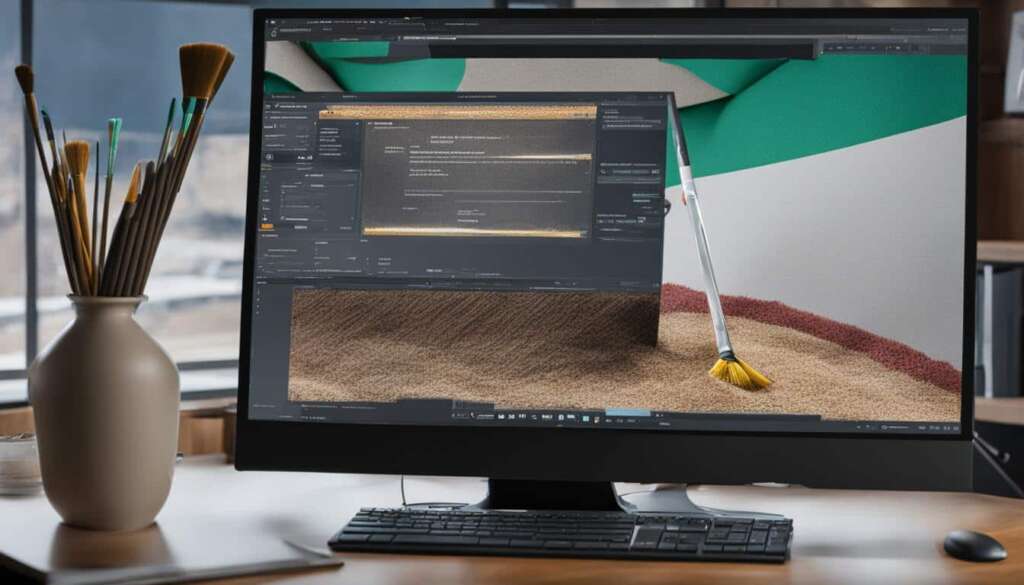Table of Contents
Building a gaming PC can be an exciting and rewarding experience. To start, you’ll need to gather the right components for your build. This includes a processor (CPU), motherboard, graphics card (GPU), system memory (RAM), data storage, PC case, power supply unit (PSU), CPU heatsink/fan, monitor, and mouse. These components work together to create a powerful and efficient gaming rig. When selecting each component, you’ll need to consider factors such as compatibility, performance, and budget. It’s essential to choose quality components that meet your desired gaming experience and future-proof your build.
Now that you have a list of essentials, you can dive into the exciting world of building your gaming PC. In the next sections, we will guide you on selecting the key components, provide a step-by-step guide for assembly, and give you tips for building a budget-friendly gaming PC. Whether you’re a seasoned gamer or new to the gaming community, this guide will help you achieve the gaming PC of your dreams.
Selecting the Key Components
Selecting the key components for your gaming PC is crucial to ensure optimal performance. Let’s dive into the important factors to consider when choosing your components.
Choosing the Right Motherboard
Start by selecting a motherboard that is compatible with your chosen CPU. Look for one that supports the features you need, such as sufficient expansion slots and ports. Additionally, consider the form factor and size of the motherboard to ensure it fits your chosen PC case. Take note of the necessary socket and chipset for your CPU, as this will determine if they are compatible.
Considerations for CPU Selection
When it comes to CPU selection, consider the performance and overclocking capabilities. Look for a CPU that suits your gaming needs and falls within your budget. Determine how many cores and threads you need, as well as the clock speed. Also, check if the CPU requires a dedicated cooler or if it comes with one. This will help ensure efficient cooling and prevent overheating during intense gaming sessions.
Choosing the Right Graphics Card
A high-quality graphics card is essential for a smooth gaming experience. Look for a GPU that can handle the latest games and provides the desired performance level. Consider factors such as the core count, clock speed, and VRAM capacity. These specifications will influence the visual quality and frame rate of your games. Compare different options and read reviews to make an informed decision.
Choosing the right components for your gaming PC can make a significant difference in performance and overall gaming experience. Take your time to research and compare different options to ensure you’re getting the best value for your money.
Building Your Gaming PC
Now that you have all the components ready, it’s time to assemble your gaming PC. Building your own gaming PC can not only save you money, but also offer a sense of pride and customization. To ensure a successful PC assembly, follow this step-by-step guide:
Step 1: Prepare your Workspace
Start by preparing a clean and spacious workspace. Lay down an anti-static mat or work on a non-conductive surface, such as a wooden table. Ensure that you are properly grounded by wearing an anti-static wrist strap or touching a grounded metal object regularly.
Step 2: Install the Motherboard
Begin by carefully installing the motherboard into the PC case. Align the screw holes on the motherboard with the standoffs in the case. Secure the motherboard using the screws provided with the case. Ensure that the motherboard is securely fixed in place.
Step 3: Install the CPU, RAM, and GPU
Install the CPU according to the manufacturer’s instructions. Apply thermal paste to the CPU to improve heat transfer. Install the CPU cooler or heatsink/fan. Insert the RAM sticks into the motherboard’s RAM slots, ensuring they are properly seated. Finally, install the graphics card into the corresponding PCIe slot, securing it with screws if necessary.
Step 4: Connect the Cables
Connect the necessary cables between the components. This includes the power supply cables, SATA cables for data storage devices, USB headers, audio connectors, and the CPU fan connector. Refer to the motherboard and component manuals for specific instructions and cable placements.
Step 5: Attach Peripherals
Attach your peripherals such as the mouse, keyboard, monitor, and headset to their respective ports. Ensure that all cables are securely connected. Double-check the connections to ensure everything is in place.
Step 6: Test and Power On
Before fully closing the PC case, double-check all connections and ensure that there are no loose cables. Connect the power supply to the motherboard and peripherals. Power on the PC and check if it successfully boots up. If any issues arise, refer to the component manuals or online resources for troubleshooting.
By following this step-by-step guide, you can confidently build your own gaming PC. Take your time, be patient, and enjoy the process of assembling your custom gaming rig.
Tips for a Budget-Friendly Build
Building a gaming PC on a budget doesn’t mean sacrificing gaming performance. With careful component selection and cost-saving strategies, you can create a budget-friendly gaming rig that delivers impressive gaming experiences.
Start by setting a budget for your build. This will help you prioritize your spending and focus on the components that have the most significant impact on gaming performance, such as the CPU and GPU. Look for cost-effective options that offer good value for money without breaking the bank.
Consider purchasing components from previous generations or opting for mid-range options. These components often provide excellent performance at a more affordable price point. Additionally, exploring the used market can uncover deals on components that are still in good condition, further reducing costs.
While it’s important to save money, don’t compromise too much on performance. Research and compare different components to find a balance between cost and gaming capability. Remember, a well-planned budget gaming PC can still deliver a satisfying gaming experience without overspending.
FAQ
How do I build a gaming PC?
To build a gaming PC, you’ll need to gather the right components, including a processor (CPU), motherboard, graphics card (GPU), system memory (RAM), data storage, PC case, power supply unit (PSU), CPU heatsink/fan, monitor, and mouse. These components work together to create a powerful gaming rig.
What should I consider when selecting the key components?
When selecting the key components for your gaming PC, consider factors such as compatibility, performance, and budget. For the motherboard, choose one that is compatible with your chosen CPU and supports the features you need. Consider the performance and overclocking capabilities of the CPU, as well as the cooling solution required. For the graphics card, look for one that can handle the latest games and offers the desired performance level.
How do I assemble my gaming PC?
To assemble your gaming PC, start by preparing your workspace and ensuring you’re grounded to prevent static electricity from damaging the components. Install the motherboard into the case, followed by the CPU, RAM, and GPU. Connect all the necessary cables, including those for USB, audio, power supply, and cooling. Finally, attach your peripherals such as the mouse, keyboard, monitor, and headset. Follow the step-by-step instructions provided with each component for a successful assembly.
How can I build a gaming PC on a budget?
Building a gaming PC on a budget is possible by carefully selecting components and using cost-saving strategies. Set a budget and prioritize the components that have the most significant impact on gaming performance, such as the CPU and GPU. Look for cost-effective options that offer good value for money without sacrificing too much on performance. Consider purchasing components from previous generations or exploring the used market for deals on components that are still in good condition.







